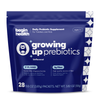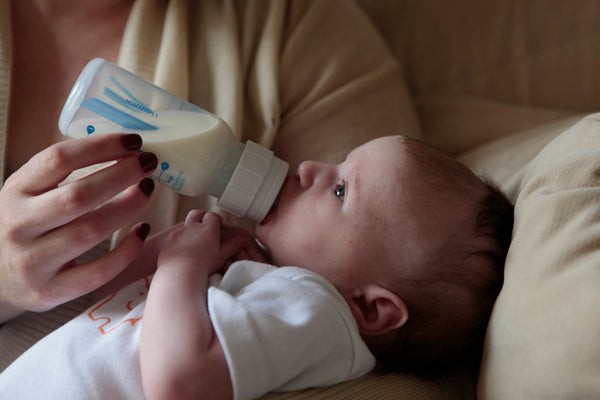4 Pre-Potty Activities from a Pediatric Physical Therapist that Can Help Your Kid’s Constipation
share this article

If you’ve been to the doctor at least once for your kid’s chronic constipation, you’ve probably heard that they should sit to try to poop after eating a meal. This is because of the gastrocolic reflex, which is another way of saying that when the stomach fills up with food, the colon gets the message to move poop along to make room.
Your doctor is right if you’ve heard this advice before - ideally, your kids should be sitting on a toilet 15 minutes after finishing a meal, more or less. But if your little one is suffering from chronic constipation, just sitting on the toilet after a meal might not be enough. You can set them up for success by having them do a few simple activities between eating and sitting on the toilet. Here are 4 pre-potty activities that can help with your kid’s struggle with constipation:
How to Find a Pre-Potty Routine to Help Your Kid’s Constipation
In order to get stool out quickly and completely, humans need to relax their pelvic floor muscles as they sit on the toilet and bear down to push poop out. If your kiddo has a long history of withholding their poop, if they have a tendency to be anxious about pooping, or if they generally are wound pretty tight, relaxing the pelvic floor muscles may not come easily. In fact, many people with chronic constipation have what’s called dyssynergic defecation - this means that the muscles of the pelvic floor are actually tightening up when the rectum contracts to push poop out.
But there’s good news! Several relatively easy activities have been found to relax the pelvic floor muscles. Here are four activities that can be incorporated into your kid’s potty routine to help with constipation:
Belly Breathing
Generally speaking, taking a great big belly breath and exhaling slowly will have a relaxing effect on the muscles of the pelvic floor. While the pelvic floor usually descends, or relaxes, when you breathe in and contracts a little when you breathe out, the cumulative effect of several deep breaths in a row is relaxing.
Here is a step by step breathing exercise to help them relax:
- Have your kid lay on their back with their hand on their belly.
- Have them take in a deep breath through their nose, hold it for 1-2 seconds, then breathe out through their mouth.
- If you notice that they are really expanding their chest right away with the exhale, see if you can’t cue them to breathe down into their belly and raise their hand a little bit with the air they take in.
- They should do this for a few minutes, then go sit on the toilet.
Frog Squats followed by Child’s Pose
I was part of a study that found that frog squats followed by a child’s pose was just as effective as belly breathing at lowering pelvic floor muscle tone. Several kids I know find this so effective that hopping like a frog has become a part of their after-dinner routine.
Have your kid do as many deep squats (or frog jumps) as they can in a row. Then have them recover in child’s pose for 1-2 minutes, taking deeper breaths and letting their bodies recover. Then send them to the toilet!
A Body Scan Mindfulness Meditation
The idea behind doing a guided body scan is that if you can relax all the easy muscles (your back, your neck, your hands, your feet), you will, without knowing it, also relax the pelvic floor muscles. Several apps and websites have body scan meditations; I like the Insight Timer app because it has several free ones for kids of all ages.
Core Exercises
At least one research study has found a link between decreased trunk strength and chronic constipation. So have many pediatric physical therapists! Core strengthening should be a part of any long-term plan to treat chronic constipation, but I’ve found it can have a great short-term effect in some kids as well. It’s not unusual for me to be working on core strength with a patient and they stop the activity to go sit on the toilet to have a BM. Here are some easy core strengthening exercises to try with kids:
- Wheelbarrow walking: you hold their feet, they walk across the house on their hands.
- Boat pose: they sit on their bottom, lean back (they can put their hands on the floor behind them to balance), then pick up their legs off the floor.
- Superheroes: They lie on their belly and pick both arms and both legs up off the floor, as if they are flying. Hold for 5-10 seconds, repeat several times. (I like to alternate boat pose and superheroes for maximum effect.)
Some of these activities might work for one kid and not work on others. So try them all out and keep track of what ones seem to be the most effective. After school is also a great time to give the activities a try, if you can’t fit them in right after a meal.
Daily reads to help your little ones lead happier and healthier lives.
Join the
Happy Gut Club
Summary
Pre-potty activities that can help kids with constipation include belly breathing, deep squats, a mindfulness meditation or some core exercises in between eating and sitting.
















